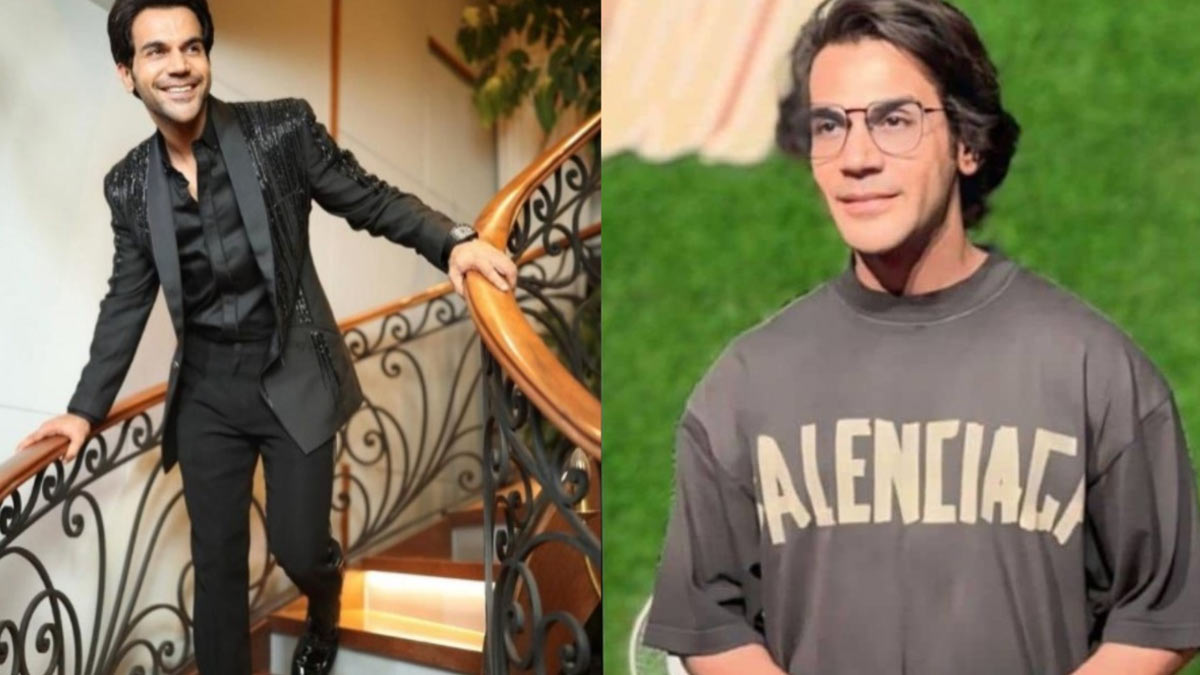
As Rajkummar Rao gears up for the release of his latest film *Srikanth Aa Raha Hai Sabki Aankhein Kholne*, a seemingly trivial debate has taken centre stage - has he undergone plastic surgery? A viral picture from Diljit Dosanjh's recent concert ignited speculations, prompting Rao to address the rumours head-on. His response? "It is not plastic surgery!"
Table of Content:-
Rao's Perspective
In a candid conversation, Rao expressed his bemusement at being compared to Rishabh Sawhney, the antagonist in *Fighter* (2024). Dismissing the notion, he remarked on the surreal perfection of the viral image, highlighting his own imperfections and asserting the authenticity of his appearance. Embracing his journey of ageing, he candidly admitted to the natural progression of fine lines and changes in his appearance over the years.
Reflecting on his initial encounters with industry standards of beauty, Rao recounted his early struggles and the scepticism he faced regarding his suitability for leading roles. However, his foray into dermatological interventions offered him newfound confidence. A pivotal moment came when a dermatologist pointed out an imbala.

Introduction to Genioplasty
Genioplasty, derived from the Greek word "genio" meaning chin, and "plasty" referring to moulding or shaping, encompasses a spectrum of surgical techniques aimed at modifying the chin's structure. Unlike reconstructive procedures necessitated by trauma or congenital anomalies, genioplasty primarily caters to aesthetic preferences, accentuating facial contours and proportions.
Indications for Genioplasty
As per Dr Manish Itolikar, Consultant Physician, Fortis Hospital, Mulund, genioplasty addresses a myriad of aesthetic concerns, ranging from mild chin asymmetry to pronounced deficiencies or excesses in chin projection. Common indications include:
- Retrogenia: Characterized by a deficient chin projection relative to facial proportions, retrogenia can impart a retrusive facial profile, necessitating chin advancement to restore facial harmony.
- Prognathism: Conversely, prognathism denotes an excessive chin projection, often accompanied by dental malocclusion and facial disharmony. Genioplasty offers corrective measures to refine chin prominence and achieve facial balance.
- Chin asymmetry: Facial asymmetry, encompassing unilateral or bilateral discrepancies in chin projection, underscores the complexity of facial aesthetics. Genioplasty facilitates targeted interventions to rectify asymmetrical chin contours and enhance facial symmetry.
Also Read: Kiran Rao Reveals She Had Multiple Miscarriages Before Conceiving; Causes Of Recurrent Miscarriage
Types of Genioplasty
Genioplasty encompasses diverse surgical approaches tailored to individual anatomical nuances and aesthetic objectives. Two primary techniques include:
- Sliding Genioplasty: This technique involves mobilizing the chin bone through an osteotomy (bone cutting) and repositioning it to achieve the desired chin projection. Sliding genioplasty offers unparalleled versatility, allowing precise adjustments in horizontal and vertical dimensions to address varying degrees of chin deficiency or excess.
- Chin Implants: Chin augmentation via implants represents a popular alternative to osteotomy-based techniques, particularly in cases of mild to moderate chin deficiency. Synthetic implants, composed of materials such as silicone or medpore, are meticulously sculpted and positioned to augment chin projection and enhance facial contours.
Surgical Procedure and Aftercare
The surgical protocol for genioplasty entails meticulous preoperative planning, intraoperative precision, and comprehensive postoperative care. Key procedural steps include:
- Preoperative assessment: A comprehensive evaluation of facial anatomy, dental occlusion, and patient aesthetic goals guides surgical planning and implant selection.
- Surgical approach: Depending on the chosen technique, incisions are strategically placed intraorally or submentally to access the chin bone and soft tissue.
- Osteotomy and implant placement: Sliding genioplasty involves precise bone manipulation and fixation to achieve desired chin repositioning, while chin implant placement necessitates meticulous implant positioning and fixation to ensure optimal aesthetic outcomes.
- Postoperative care: Vigilant postoperative monitoring, including pain management, oral hygiene maintenance, and dietary modifications, facilitates optimal healing and mitigates potential complications.
Complications and Considerations
Despite advancements in surgical techniques and perioperative care, genioplasty is not devoid of potential risks and complications. Common considerations include:
- Infection: Surgical site infections, albeit rare, pose significant risks to postoperative outcomes and may necessitate prompt intervention.
- Implant-related complications: Implant malpositioning, displacement, or extrusion may compromise aesthetic results and mandate revisionary procedures.
- Nerve injury: Injury to neurovascular structures during surgery may result in sensory disturbances, mandating meticulous surgical technique and intraoperative nerve monitoring.
Bottomline
In debunking the rumours surrounding his appearance, Rajkummar Rao sheds light on the nuanced realm of cosmetic enhancements. His journey underscores the evolving attitudes towards aesthetic interventions in the entertainment industry. As Rao continues to captivate audiences with his versatile performances, his candidness serves as a testament to embracing one's individuality amidst societal pressures of beauty standards.
Also watch this video
How we keep this article up to date:
We work with experts and keep a close eye on the latest in health and wellness. Whenever there is a new research or helpful information, we update our articles with accurate and useful advice.
Current Version